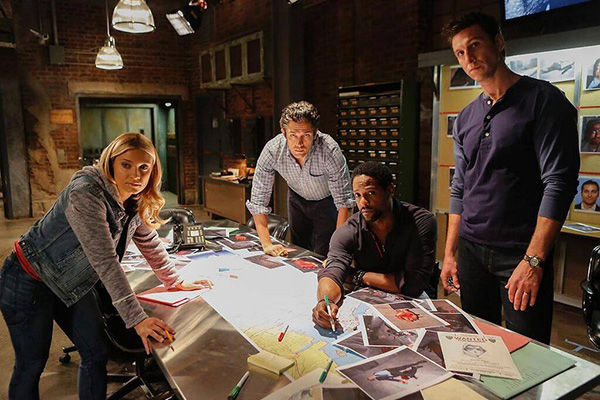
As the fall TV season continues, the success or failures of shows adapted from a source — whether from a book, film or another television show — become more readily apparent. Much of this has to do with the dedicated fanbases that are willing to give their show the support it needs, or the lack of a viewership networks expect a show to draw.
One of NBC’s first cancellations this season was “Ironside,” a reboot of a late ’60s show of the same name. A cop series always has the potential to attract dedicated viewers, thanks to thematic elements that have remained popular with the public. Still, “Ironside’s” downfall proved that the idea audiences are still willing to watch something they’ve seen hundreds of times is a misconception. A premise that may have worked in the ’60s is no longer welcome in a modern TV landscape replete with prefers high-concept dramas and in-depth fantasies.
But even though audiences seem to love fantasies, that didn’t help ABC’s “Once Upon a Time in Wonderland” from being a ratings disaster. It hasn’t enjoyed nearly the same success as its parent series “Once Upon A Time.” Though the show has avoided cancellation thus far, its perilously low ratings do not bode well for its future.
“Wonderland’s” lack of success is due to its inability to stake a unique claim separate from its predecessor. If both shows are too similar, one of them is bound to lose audience interest and between the two, the loser is “Wonderland.”
However, one of the fall season’s biggest, and most surprising, successes came in the form of FOX’s “Sleepy Hollow.” The show has already been renewed for a second season and has quickly built a dedicated viewership. “Sleepy Hollow” engages supernatural-adoring audiences and fans of the famous 1820 short story, “The Legend of Sleepy Hollow,” while also drawing in younger audiences through the central romance, mystery and modern spin.
A show like “Sleepy Hollow” that can engage an audience in its world — not only through the setting but also through the lives of the characters — is a show that will stick around in the minds of viewers for years, constantly leaving them wanting more.
AMC’s “The Walking Dead” is a clear example of this method put to practice. Not only does the apocalyptic world of zombies and constant terror draw in audiences in droves, but they also form a relationship with the characters, worrying for their futures in a harsh world.
Even when critical reception wavers, “The Walking Dead” still manages to consistently rake in, and even gain, viewers. The lives of the characters and their struggles hook that audience, and the built-in fanbase from the original graphic novel series only helped lay the foundation for the show’s ratings success.
This current TV season is a fascinating example of how adapting from a previous entity can contribute to a show’s success — but doesn’t guarantee it. In the cases of “Ironside” and “Wonderland,” the new iterations didn’t build or innovate upon their predecessors. It helps to introduce an audience to a universe while developing fresh, character-driven stories. That way, old ideas can transform into something new and impressive.
A version of this article appeared in the Thursday, Nov. 7 print edition. Laura Wolford is a staff writer. Email her at [email protected].











































































































































